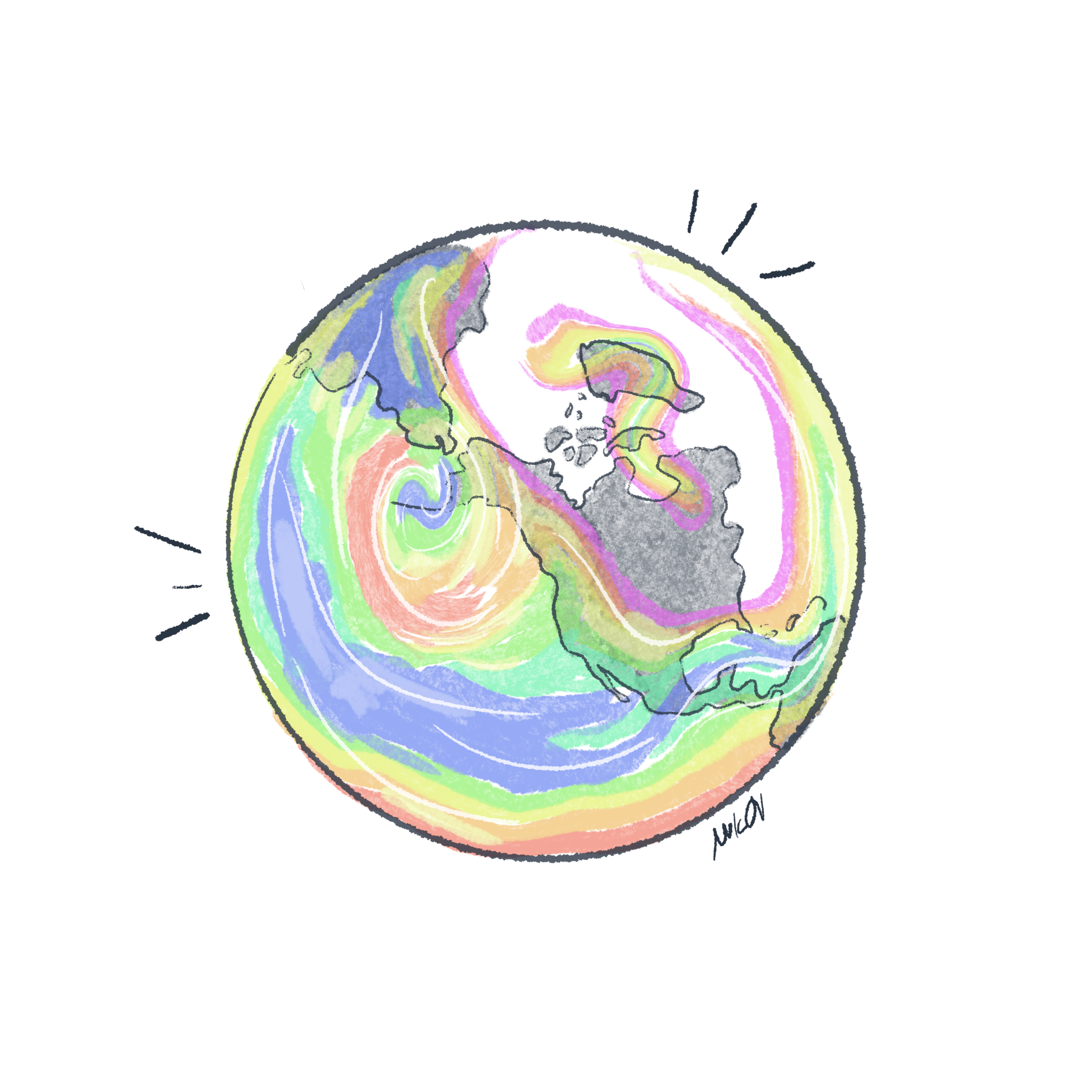Yale researchers predict ocean circulation of Pliocene Era
Pliocene Era ocean circulation models agree with empirically collected pH values of the past to accurately predict drastic changes in climate

Mark Cheung
Two teams of Yale researchers independently reached identical conclusions about the nature of Pacific currents in the Pliocene era, a time with carbon dioxide levels and sea surface temperatures equivalent to projections of Earth one century from today.
As carbon dioxide levels rise, the ocean climate community continues to ponder the impact on ocean currents. Teams of Yale researchers studied empirical geological evidence for ocean circulation and programmed global climate models independently, but produced identical findings. Madison Shankle ’18, a current doctoral student at St. Andrews University and the first author on the recently published paper detailing both of the team’s findings, arrived at the novel conclusion that the pH concentration gradient in ocean water during the Pliocene era was drastically larger than that of today. The ultimate goal of the research is to determine whether the Pacific Ocean will enter a permanent El Niño climate pattern — characterized by low water circulation levels resulting in a lack of nutrients for biodiversity. This would mark a disastrous future for fisheries and agriculture alike.
“El Niño cycle is an incredibly important part of climate, and given that we don’t have great ability to predict it, we want to understand it for the past,” said Noah Planavsky, a collaborator of Shankle’s and a professor in the Yale Department of Earth and Planetary Sciences. “The last time CO2 levels were where they will be in 100 years was the Pliocine era. We want to find out what is happening to the Earth’s system at those CO2 levels.”
The ocean currents during the Pliocene era have predominantly been investigated through models that use temperature to describe circulation, but there are a wide variety of conflicting results that cannot account for increased diversity of marine life in the East Pacific.
Along with temperature, pH levels can be used to differentiate between ocean levels and circulatory patterns. This study uses pH as a proxy for circulation, a novel approach. Adopting this approach can provide scientists with new and potentially revolutionary information.
While at Yale, Shankle rolled up her sleeves, analyzing isotope ratios from the Pliocene era, which has similar carbon dioxide levels and sea surface temperatures to what is projected for Earth in 2121, and she found surprising results.
During the Pliocene era, lower amounts of deep water were circulating to the surface, but its high pH and nutrient levels increased biodiversity levels in the East Pacific. In contrast, the deep ocean water of today is less acidic than that of the Pliocene era, requiring high levels to support increased biodiversity.
“Yes, it is a permanent El Niño,” Pincelli Hull of the Yale Department of Earth and Planetary Sciences said of the phenomena. “But because of the change in current patterns, it will still bring up as much or more nutrients than it does today, and that was a truly hopeful finding, and it was totally unexpected.”
El Niño impacts do not stop at biodiversity. The emergence of a new circulation pattern in the Pacific could have global climate implications. As an example of the scale of such changes, Shankle described the effect of the gulf stream on global climate.
“The gulf stream is what keeps the U.K. relatively warm and nice, even though it is at the same latitude as parts of Canada and Alaska,” Shankle said. “That’s an example of how powerful the AMOC is, or the Atlantic Overturning Circulation. Imagine the same kind of thing happening in the Pacific. It has those same kinds of ramifications, not only for the transport of heat, but also carbon and nutrients, and everything else the ocean has in it.”
Both Shankle and Hull were surprised by the magnitude of the pH gradient. At the outset of their research, both of them expected a lower pH level. Today, deep ocean water is more acidic than water at surface levels, which is expected, but the difference in the acidity in the Pliocene was much higher.
After their initial surprise, Shankle and Hull corroborated their results with climate modeling scientists at Yale, who had also independently found the same pH gradient after running global climate models for another project.
“[This is] the way you hope science happens,” Hull reflected. This marks a hopeful story both for the planet’s maritime future and for scientific collaboration here at Yale.
The paper was published on Oct. 20 in the journal Nature.








